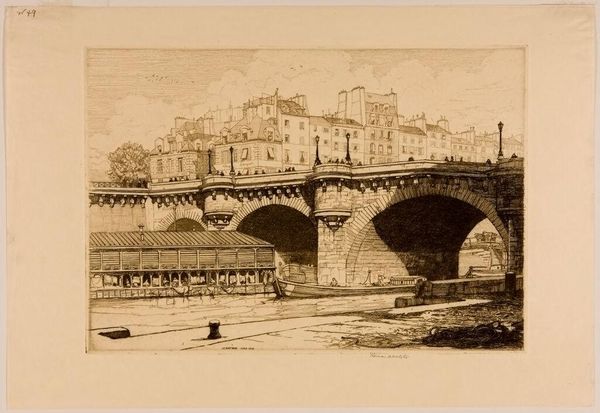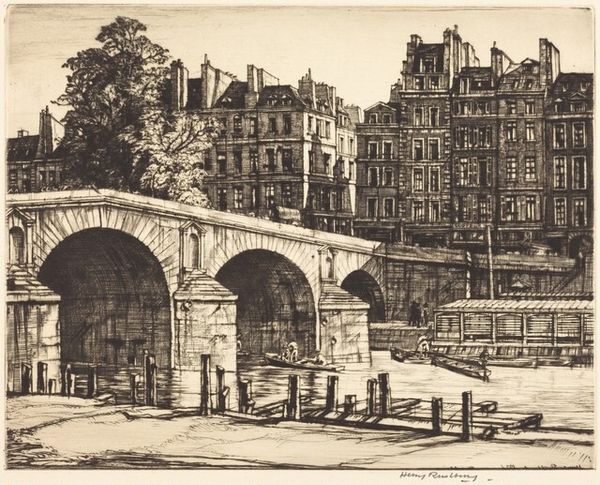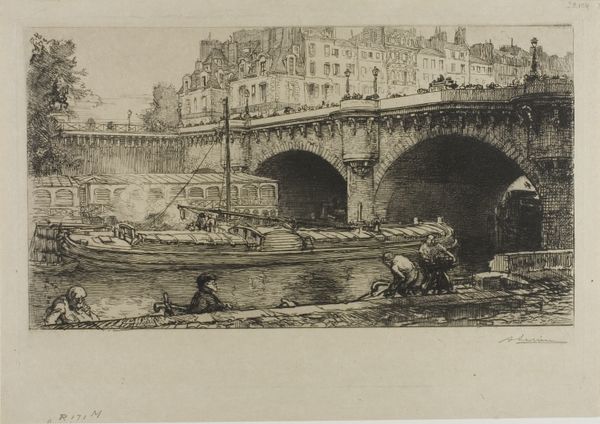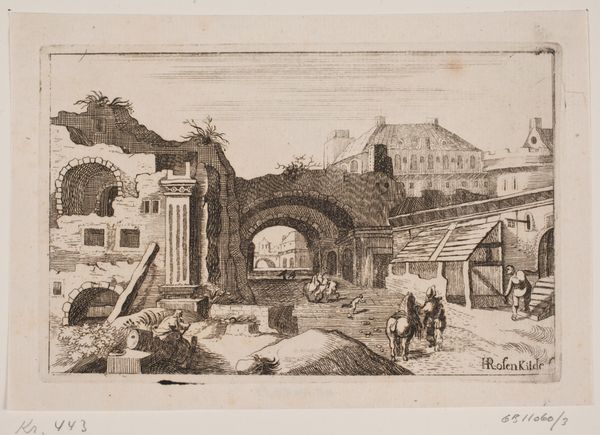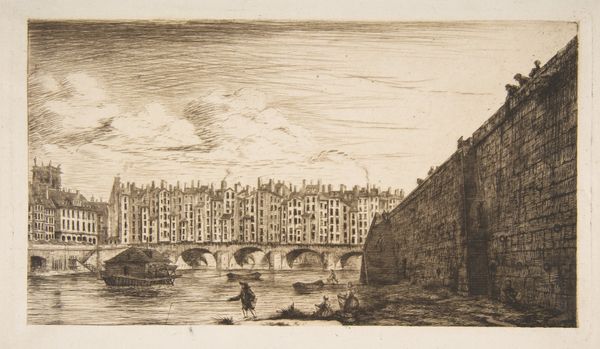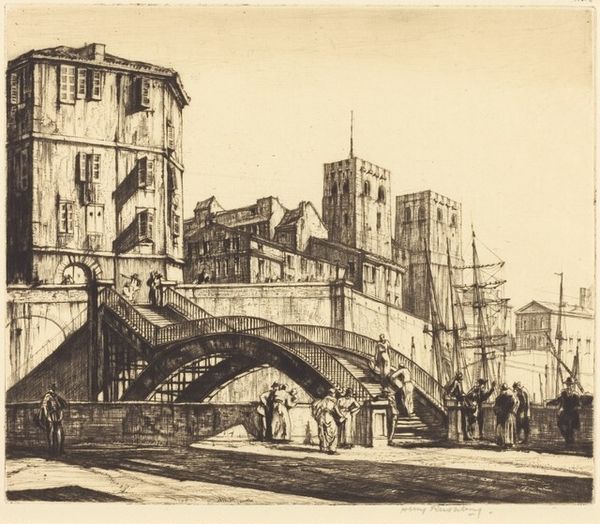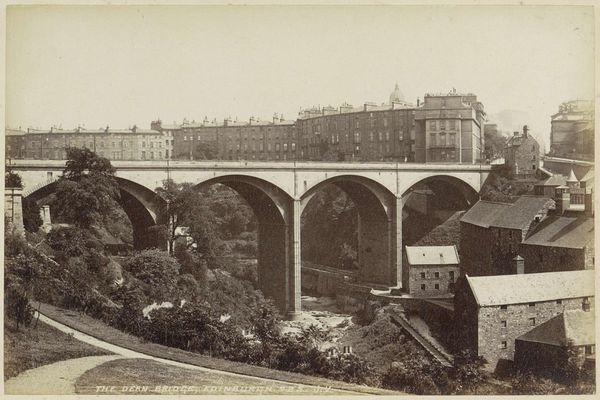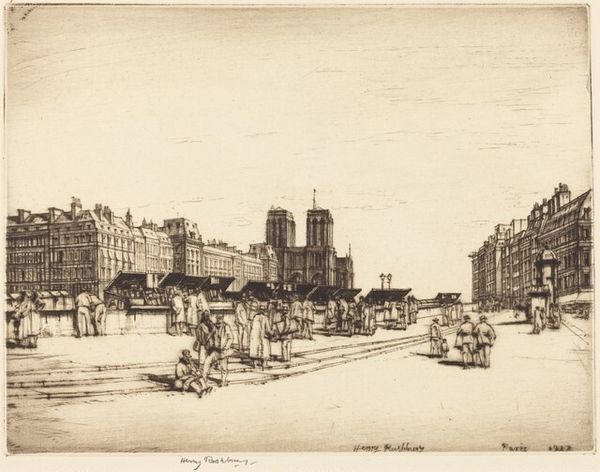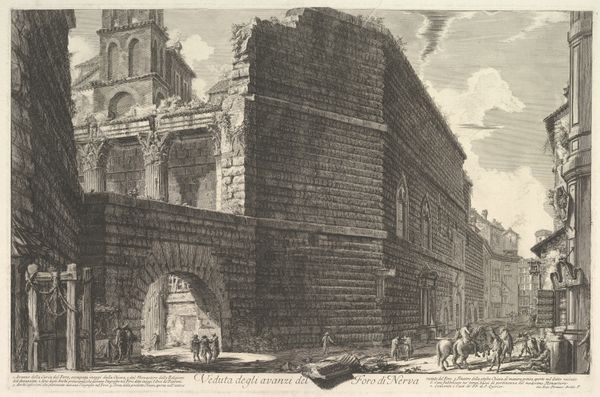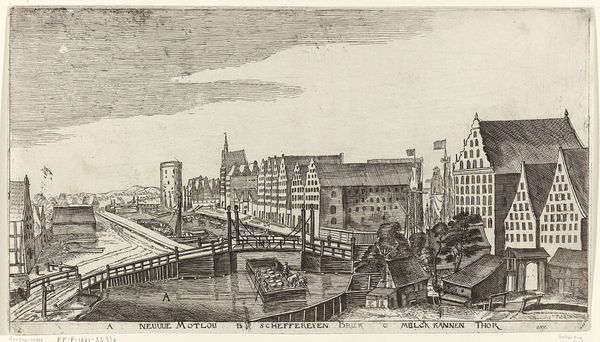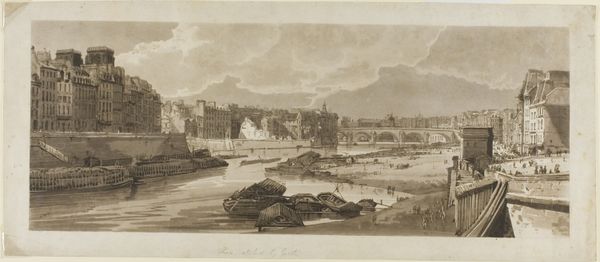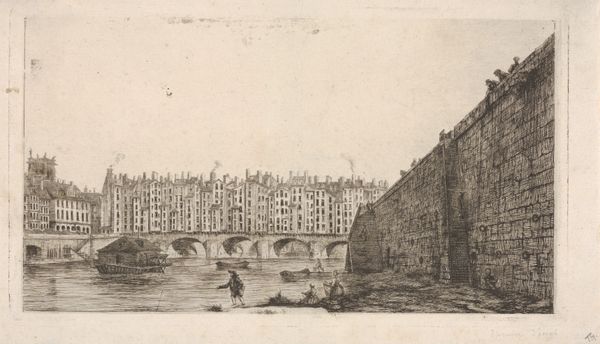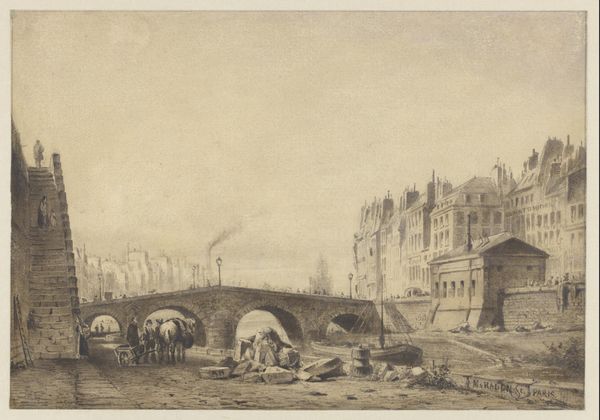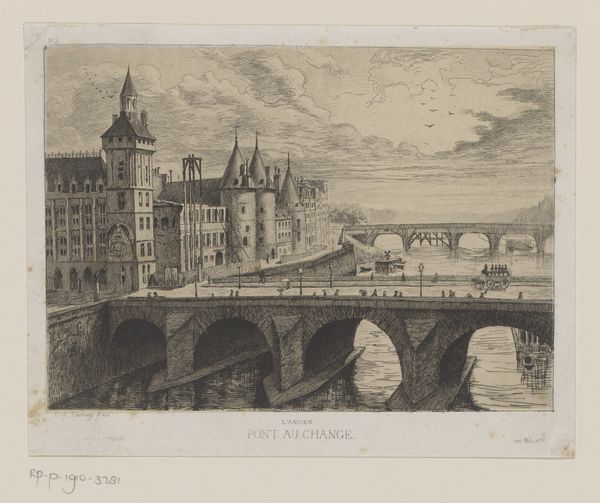
Copyright: CC0 1.0
Curator: This is Herman Armour Webster's "Pont Neuf, Paris." Looking at this etching, I'm immediately struck by its quietness; a sense of stillness pervades the busy Parisian scene. Editor: Indeed. Webster, born in 1878, positions the Pont Neuf within the complex history of Parisian urban development and social life. This bridge, the oldest in Paris, became a stage for commerce, social gatherings, and even protest. Curator: I’m drawn to the way he uses line and shadow to create such depth and texture. The weight of history really seems to press down on the city. It makes me think about the role of public spaces and the privilege of accessing them. Who is allowed to just be in the picture? Editor: Exactly. And consider how the image circulates, shaping perceptions of Paris. It’s not just a pretty picture, but a document reflecting and reinforcing certain power dynamics. The buildings leaning over the bridge almost seem to exclude the viewer. Curator: It makes you reflect on how we choose what to memorialize, and whose stories get told in the process. Editor: It certainly does. An important reminder that even seemingly straightforward depictions are laden with meaning.
Comments
No comments
Be the first to comment and join the conversation on the ultimate creative platform.
